How to Use 1031 Exchanges to Expand Your Rental Portfolio in Florida
Introduction to 1031 Exchanges
The 1031 Exchange is a powerful investment strategy that allows real estate investors to defer paying capital gains taxes on the sale of an investment property by reinvesting the proceeds into a similar property. This strategy is particularly beneficial in a market like Florida’s, where rental property demand continues to rise. Understanding the mechanics of a 1031 Exchange can help you grow your rental portfolio without immediately incurring a heavy tax burden.
In this guide, we’ll explore how you can use 1031 Exchanges to strategically expand your rental portfolio in Florida. Whether you’re a seasoned investor or new to the real estate scene, the following sections will provide clear and actionable advice on how to leverage this tax-deferral strategy to maximize your investments.
What is a 1031 Exchange?
A 1031 Exchange allows you to sell an investment property and defer paying taxes on the capital gains, provided you reinvest the proceeds into a “like-kind” property of equal or greater value. This provision is governed by Section 1031 of the U.S. Internal Revenue Code. The primary benefit is the tax deferral, which allows your investment to grow without the immediate tax liability.
Key Features of a 1031 Exchange
Like-Kind Property Requirement: The replacement property must be of the same nature, character, or class as the property being sold. In the context of rental properties, this means you can sell one rental property and buy another rental property.
Timelines for Exchange: The IRS sets strict timelines for completing a 1031 Exchange:
- 45-day Identification Period: You must identify potential replacement properties within 45 days of selling your property.
- 180-day Completion Period: You must complete the purchase of the replacement property within 180 days from the sale of the original property.
Qualified Intermediary: A 1031 Exchange must involve a Qualified Intermediary (QI), a neutral third party that facilitates the exchange process. The QI holds the proceeds from the sale of your property and then uses those funds to purchase your new property.
Tax Deferral: The biggest advantage of a 1031 Exchange is the deferral of capital gains taxes. However, this is not a tax elimination strategy. If you sell the replacement property later, you will be taxed on the gains from both the original and replacement properties unless you engage in another 1031 Exchange.
Types of Properties Eligible for a 1031 Exchange
Not all properties qualify for a 1031 Exchange. To ensure your exchange is eligible, the property being sold and the property you are acquiring must both be used for investment purposes. Examples of eligible properties include:
- Residential rental properties
- Commercial real estate
- Industrial properties
- Raw land
In Florida, where rental properties are in high demand, the 1031 Exchange is an ideal way to scale your portfolio and increase rental income over time.
Steps to Conduct a 1031 Exchange
Now that you understand the basics of a 1031 Exchange, let’s go over the practical steps to carry out the process. The steps below will guide you through the necessary actions to complete a successful exchange and grow your rental portfolio in Florida.
Step 1: Sell Your Investment Property
The first step in a 1031 Exchange is selling your existing investment property. This property must be held for investment or business purposes and not for personal use. In Florida, popular investment properties such as single-family homes, duplexes, or multi-family units qualify for a 1031 Exchange, as long as they are used as rental properties.
Be mindful of the following:
- Ensure that you have a qualified property that will meet the “like-kind” requirement.
- Set an appropriate selling price that aligns with your investment goals.
Step 2: Engage a Qualified Intermediary (QI)
After selling your property, you cannot directly handle the funds from the sale. The IRS requires the use of a Qualified Intermediary (QI) to handle the proceeds. This intermediary will hold the funds in an escrow account while you search for your replacement property.
Choosing a reliable QI is critical for a smooth exchange. Ensure that the QI is experienced in handling 1031 Exchanges and is familiar with the Florida real estate market.
Step 3: Identify Potential Replacement Properties
You must identify potential replacement properties within 45 days of selling your property. This is known as the “Identification Period.” During this time, you can identify up to three properties or more, depending on the value and nature of the properties. Keep in mind the “like-kind” rule that all properties identified must meet the criteria of being used for investment purposes.
If you are looking to expand your rental portfolio in Florida, focus on properties that provide strong rental income potential, such as:
- Multi-family properties in urban areas like Miami or Orlando
- Single-family homes in growing suburban markets
- Vacation rental properties in tourist-heavy areas such as Key West or the Gulf Coast
Step 4: Complete the Purchase of Your Replacement Property
The next step is purchasing the replacement property. You have 180 days from the sale of your original property to complete the purchase. This is known as the “Exchange Period.” If you do not close on the replacement property within this time frame, the IRS may disqualify the exchange, and you could be subject to paying taxes on the capital gains.
It’s essential to work closely with your real estate agent, especially one familiar with the Florida market, to ensure the replacement property meets your investment objectives. Ensure the property is priced similarly to the one you sold to qualify for the full tax deferral.
Understanding Common Challenges in 1031 Exchanges
While 1031 Exchanges offer excellent tax-saving opportunities, they also come with challenges. Below are some of the common obstacles investors face when using 1031 Exchanges and tips for overcoming them:
Challenge 1: Identifying Suitable Replacement Properties
The 45-day identification window can be stressful, especially when the real estate market is competitive. Florida’s hot real estate market means you must act quickly to secure the right replacement property.
Solution: Work with a knowledgeable real estate agent who specializes in 1031 Exchanges. Having someone who understands the local market and has access to off-market properties will give you an edge. Additionally, make use of the “three-property rule” to increase your options.
Challenge 2: Finding “Like-Kind” Properties
It can be challenging to find “like-kind” properties that fit your criteria. For example, if you sell a multi-family building, you must find another multi-family building or a similar investment property.
Solution: Consider expanding your search to include different types of rental properties that still meet the “like-kind” criteria. For instance, raw land or commercial properties might serve as a viable replacement if they meet your investment strategy.
Challenge 3: Time Constraints
The 180-day completion period for purchasing a replacement property is tight, especially if financing is involved. Delays in securing financing, inspections, or closing can jeopardize the exchange.
Solution: Start your search for a replacement property early and ensure that you have financing lined up. Additionally, work with experienced title companies and closing agents to streamline the closing process.

Get a Free Rental Analysis
Want to know how much your home will rent for? We’ll send you a free rental report!
Financial and Tax Considerations for 1031 Exchanges
A successful 1031 Exchange requires a keen understanding of the financial and tax implications, especially when expanding your rental portfolio in Florida. Below, we dive deeper into some of the financial considerations and strategies you should keep in mind.
The Role of Debt and Equity in 1031 Exchanges
When conducting a 1031 Exchange, one of the crucial factors is the “debt” and “equity” involved in the transaction. To defer all capital gains taxes, the replacement property must be of equal or greater value than the one you sold. This includes both the sales price and the mortgage debt.
Equity: Equity refers to the cash you receive from the sale of your property after deducting the outstanding mortgage balance. For a fully tax-deferred exchange, your equity in the new property should be at least equal to the equity in the property you sold.
Debt: If your original property had a mortgage, you’ll need to replace it with a property that has an equal or greater amount of debt. Failure to do so can result in “boot,” which is any taxable portion of the exchange.
For example, if you sell a property for $500,000 with $300,000 in equity and $200,000 in mortgage debt, the replacement property should have at least $300,000 in equity and $200,000 in debt to avoid tax liabilities. If the debt on the new property is less than the old property’s, the difference is taxable, referred to as “boot.”
Handling “Boot” in a 1031 Exchange
“Boot” refers to any cash or non-like-kind property received in an exchange, which is subject to capital gains tax. In other words, if you do not meet the full value requirement for the replacement property, or if you take cash out from the exchange, you will owe taxes on the boot.
For example, if you sell a property for $500,000 but only reinvest $450,000 into a replacement property, the remaining $50,000 is considered boot and will be taxed.
How to avoid boot:
- Reinvest all proceeds into a property of equal or greater value.
- Consider using a larger down payment to purchase a more valuable property if your current property’s value does not fully match the replacement.
Tax Implications of Depreciation Recapture
Depreciation is a common tax benefit for rental property owners. When you sell a rental property, you must account for depreciation recapture. This occurs when you sell the property for a profit and are required to pay taxes on the depreciation deductions you claimed over the years.
During a 1031 Exchange, depreciation recapture may be deferred as well, but it will become due if you eventually sell the replacement property without doing another 1031 Exchange.
Example of Tax Deferral
Let’s say you purchase a rental property in Florida for $400,000. Over the years, you’ve claimed $50,000 in depreciation. When you sell the property, you may owe taxes on the $50,000 in depreciation recapture. However, if you reinvest the proceeds through a 1031 Exchange, the capital gains tax and depreciation recapture can be deferred, allowing your investment to grow tax-free.
If you decide not to do another 1031 Exchange in the future, the depreciation recapture will be taxed at a rate of 25%, which could eat into your profits.
Choosing the Right Replacement Property
Selecting the right replacement property is critical when conducting a 1031 Exchange, particularly when expanding your rental portfolio. You need to ensure that your replacement property not only meets the “like-kind” requirements but also aligns with your long-term investment strategy. Below are some tips for choosing the best replacement property in Florida.
Location and Market Trends
In Florida, location is key to maximizing the return on your rental properties. Consider the following factors when choosing a replacement property:
High-demand rental markets: Areas like Miami, Orlando, and Tampa continue to have strong rental demand. These cities attract both residents and tourists, making them ideal for long-term rental investments.
Emerging neighborhoods: Look for up-and-coming areas in Florida that are experiencing growth. Properties in emerging neighborhoods may offer more significant appreciation potential, as the area is expected to develop over time.
Proximity to amenities: Look for properties near desirable amenities such as schools, shopping centers, public transportation, and entertainment. These are factors that renters prioritize when looking for a new place.
For example, a property near downtown Miami may be ideal for attracting high-paying tenants, while a property near tourist destinations such as Disney World in Orlando may be perfect for short-term vacation rentals.
Property Condition and Maintenance Costs
Before proceeding with a 1031 Exchange, ensure that the replacement property is in good condition. The condition of the property directly affects your ability to generate rental income and could impact your long-term return on investment.
Inspection and due diligence: Always perform a thorough inspection of the replacement property before committing to the exchange. Look for potential issues such as foundation problems, outdated plumbing, or electrical systems that may require significant repairs.
Budget for maintenance: Older properties may come with higher maintenance costs, so it’s essential to factor this into your decision-making. On the other hand, newly constructed properties may require less immediate maintenance but could have a higher upfront cost.
Property Management Considerations
If you plan to manage the rental property yourself, consider the property’s size and location relative to your ability to provide hands-on management. If you’re expanding a rental portfolio and want to limit day-to-day involvement, you may want to opt for properties that are part of well-managed condominium or townhouse communities, which often offer built-in maintenance services.
Alternatively, consider outsourcing property management to a reputable company in Florida, especially if you are dealing with multiple properties. A professional property management company can help streamline tenant placement, maintenance, and day-to-day operations, saving you time and stress.
Leveraging 1031 Exchanges for Portfolio Growth in Florida
By using 1031 Exchanges strategically, you can gradually expand your rental portfolio, increase your passive income, and build long-term wealth. Below are some strategies that can help you maximize the benefits of a 1031 Exchange:
Strategy 1: Diversify Your Portfolio
One of the advantages of a 1031 Exchange is that it allows you to diversify your portfolio without triggering capital gains taxes. For example, if you currently own a single-family home, you might consider exchanging it for a multi-family building. Alternatively, you could exchange it for a commercial property or vacation rental, thus spreading your risk and increasing the potential for long-term returns.
Strategy 2: Upgrade to Higher-Value Properties
As your portfolio grows, you can use 1031 Exchanges to upgrade to more valuable properties. This strategy allows you to build equity over time without paying capital gains taxes. By reinvesting your proceeds into properties with higher rental income potential, you can accelerate your wealth-building process.

Advanced Strategies for 1031 Exchange Investors in Florida
As an investor using 1031 Exchanges to expand your rental portfolio in Florida, you might eventually need to implement advanced strategies to optimize your tax deferral benefits and portfolio growth. The following strategies can help you maximize the potential of your 1031 Exchange while addressing some of the more complex challenges that arise as your portfolio expands.
Deferred Exchanges vs. Simultaneous Exchanges
There are different types of 1031 Exchanges, and understanding the differences between them can help you determine which one is best suited to your investment goals.
Deferred Exchange: This is the most common form of 1031 Exchange, where you sell your property first and then identify and purchase a replacement property within a specific time frame. The 45-day identification period and 180-day exchange period are key time constraints for the process.
Simultaneous Exchange: In a simultaneous exchange, both the sale of the relinquished property and the purchase of the replacement property occur on the same day. This exchange is less common due to the complexity of coordinating both transactions. However, it can be an effective strategy for some investors, especially if you have already identified the property you wish to acquire.
Each of these strategies has its own pros and cons, but the deferred exchange is generally preferred because it provides greater flexibility in terms of timing and allows you to select replacement properties based on market conditions.
Reverse 1031 Exchanges
In a reverse 1031 Exchange, you acquire the replacement property before selling your current property. This strategy is particularly useful if you find a prime investment property in Florida but are not ready to sell your current property yet.
However, reverse exchanges are more complex and typically involve the use of a qualified intermediary (QI) or an exchange accommodator who will hold the new property temporarily until your relinquished property is sold.
Here are some key considerations for a reverse exchange:
- Financing: You will need to secure financing for the new property before selling your existing one. This can be challenging because many lenders are hesitant to approve loans for properties that are not yet owned.
- Holding Costs: You may be required to hold both properties during the exchange, which could increase your holding costs, including insurance, taxes, and maintenance.
Despite these complexities, reverse exchanges can be a powerful tool for securing high-demand properties in Florida before selling other properties, especially in a competitive market.
Delayed Exchanges for Portfolio Consolidation
For investors looking to streamline their portfolio, a delayed 1031 Exchange can help consolidate multiple properties into a more manageable asset. For instance, if you own several small rental properties spread across different areas of Florida, you may want to sell them and use the proceeds to purchase a larger multi-family property in a prime location.
The delayed exchange allows you to sell several properties over time and acquire one or more larger properties that may offer better cash flow, higher appreciation potential, or a more favorable location.
This strategy not only defers taxes but also simplifies management and operation, making it easier to focus on the long-term success of fewer properties.
Overcoming Challenges in 1031 Exchanges
Despite the tax advantages and growth opportunities that come with a 1031 Exchange, there are common challenges that investors face when expanding their rental portfolio in Florida. Below, we’ll explore these challenges and offer actionable advice for overcoming them.
1. Identifying Suitable Replacement Properties
One of the biggest hurdles in a 1031 Exchange is identifying suitable replacement properties that meet the requirements of the IRS. The 45-day identification period may seem short, especially in a market as competitive as Florida’s.
Solution: Develop a strategy for identifying properties well in advance of listing your current property for sale. Work closely with a local real estate agent who specializes in 1031 Exchanges to help you find properties that fit your criteria. You can also consider utilizing the “three-property rule,” which allows you to identify up to three potential replacement properties within the 45-day period, even if you don’t intend to buy them all.
Solution: Keep in mind that you do not need to have the new property lined up before selling your current property. However, having a general sense of your target market and the types of properties you are interested in will allow you to move quickly once you sell.
2. Meeting the Timing Requirements
The IRS strictly enforces the 45-day identification period and 180-day exchange period. Missing these deadlines can result in a failed exchange, making your sale subject to capital gains taxes.
- Solution: Work with a qualified intermediary (QI) who is experienced in managing 1031 Exchanges and ensures you adhere to the timing requirements. The QI will help you keep track of key dates and ensure you meet all of the necessary deadlines.
3. Handling Financing Challenges
Financing can be one of the most challenging aspects of a 1031 Exchange, particularly if you are moving up in property value or using debt to acquire replacement properties. Traditional lenders may be hesitant to offer loans for a 1031 Exchange because of the added complexities.
Solution: Research financing options that are specifically designed for 1031 Exchange investors. Some lenders specialize in this type of transaction and can offer competitive rates. You may also want to consider working with private lenders or hard money lenders who are more flexible when it comes to financing 1031 Exchange transactions.
Solution: Another option is using seller financing, where the seller of the replacement property provides the financing. This can help you bypass some of the restrictions placed by traditional lenders.
4. Avoiding Overpaying for Replacement Property
When engaging in a 1031 Exchange, it’s easy to feel pressure to quickly reinvest your proceeds into a replacement property. This can sometimes lead to overpaying or acquiring a property that does not align with your long-term investment goals.
- Solution: Take your time to carefully assess each potential replacement property. Work with a local real estate professional who understands the Florida market and can help you make informed decisions. Additionally, ensure that any replacement property you purchase has strong fundamentals, such as solid rental income potential, a good location, and a realistic appreciation forecast.
5. Understanding State-Specific Tax Laws
Each state has its own tax laws that could impact your 1031 Exchange. For example, Florida does not impose a state income tax, which can be an advantage for investors compared to states with higher taxes. However, you should always consult with a tax professional to understand any potential tax liabilities that may arise from your transaction.
- Solution: Work with a real estate accountant who is familiar with both federal and Florida-specific tax laws. This will ensure that you stay compliant and take advantage of any state-specific benefits or incentives.
Building Wealth with 1031 Exchanges in Florida
Using 1031 Exchanges to grow your rental portfolio in Florida can be an incredibly effective strategy for building wealth over time. By deferring taxes, diversifying your investments, and carefully selecting replacement properties, you can create a portfolio that generates passive income and appreciates in value.
By applying the strategies outlined in this guide, you can navigate the complexities of 1031 Exchanges while avoiding common pitfalls and seizing opportunities to expand your investment portfolio in one of the nation’s most dynamic real estate markets.
Whether you’re just starting out or are an experienced investor looking to scale, the 1031 Exchange is an invaluable tool that can help you achieve your long-term financial goals in Florida’s vibrant rental property market.
Suggested Relevant Links:
Jupiter Property Management Services | Your Trusted Local Experts
Real Estate Management Palm Beach County
Palm Beach Real Estate Management Services
FAQ: 1031 Exchanges for Expanding Your Rental Portfolio in Florida
1. What is a 1031 Exchange?
A 1031 Exchange allows real estate investors to defer paying capital gains taxes on an investment property sale by reinvesting the proceeds into a like-kind property. This tax-deferral strategy can help investors expand their portfolios without immediate tax burdens.
2. How do I qualify for a 1031 Exchange?
To qualify for a 1031 Exchange, the following conditions must be met:
- Both the relinquished property and the replacement property must be held for investment or business purposes.
- The transaction must meet the IRS guidelines, including the 45-day identification period and the 180-day closing period.
- A qualified intermediary must facilitate the exchange.
3. What is the difference between a deferred exchange and a reverse exchange?
- Deferred Exchange: Sell your current property first, then buy a replacement property within the set timeline.
- Reverse Exchange: Acquire the replacement property before selling the relinquished property, though this method involves more complexity and higher costs.
4. What are the main time constraints in a 1031 Exchange?
The IRS requires that you identify potential replacement properties within 45 days after selling your property. You must also close on the replacement property within 180 days of the sale.
5. Can I use a 1031 Exchange to buy properties in Florida?
Yes, 1031 Exchanges can be used for properties located in Florida, provided the properties are for investment or business purposes. Florida’s lack of state income tax also makes it an attractive location for 1031 Exchange investors.
6. How do I avoid overpaying for a replacement property?
Carefully assess the property’s location, rental income potential, and appreciation prospects. Work with a knowledgeable real estate agent and tax advisor who can guide you in making informed investment decisions.
7. Can I exchange multiple properties for a single replacement property?
Yes, under a 1031 Exchange, you can exchange several properties for one larger replacement property. This is a common strategy for consolidating a portfolio.
8. What are the main challenges in executing a 1031 Exchange?
Challenges include meeting the strict timelines, finding suitable replacement properties, securing financing, and understanding state-specific tax laws. Working with a qualified intermediary and real estate professionals can help navigate these hurdles effectively.
9. What happens if I miss the 45-day or 180-day deadline?
Missing the deadlines can result in the exchange failing, and the sale proceeds will be subject to capital gains taxes. It’s crucial to stay organized and work with professionals to ensure compliance with all time constraints.
10. Do I need a qualified intermediary for a 1031 Exchange?
Yes, a qualified intermediary (QI) is essential for facilitating the 1031 Exchange. The QI holds the sale proceeds and helps ensure the transaction complies with IRS rules, protecting the tax-deferred status of your exchange.



